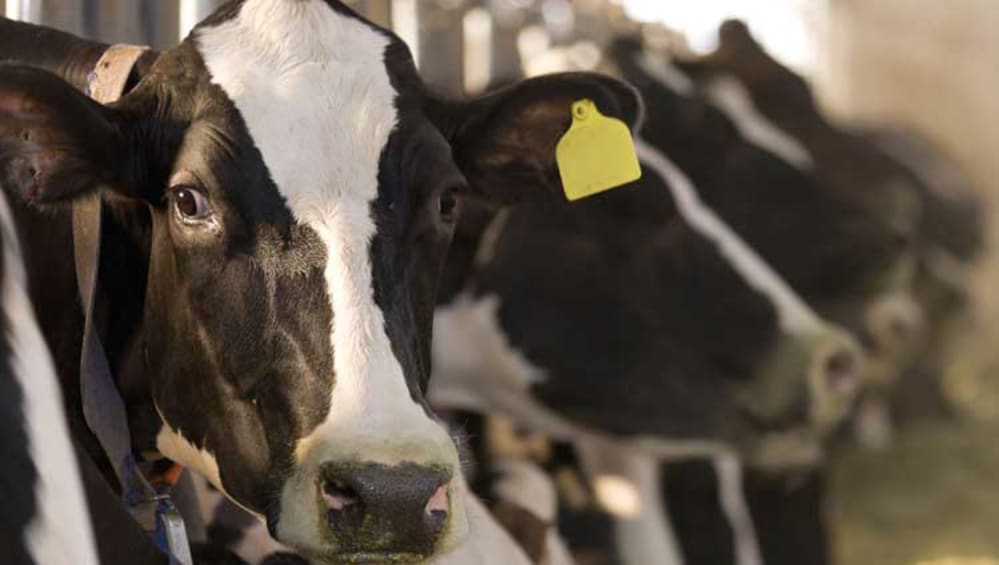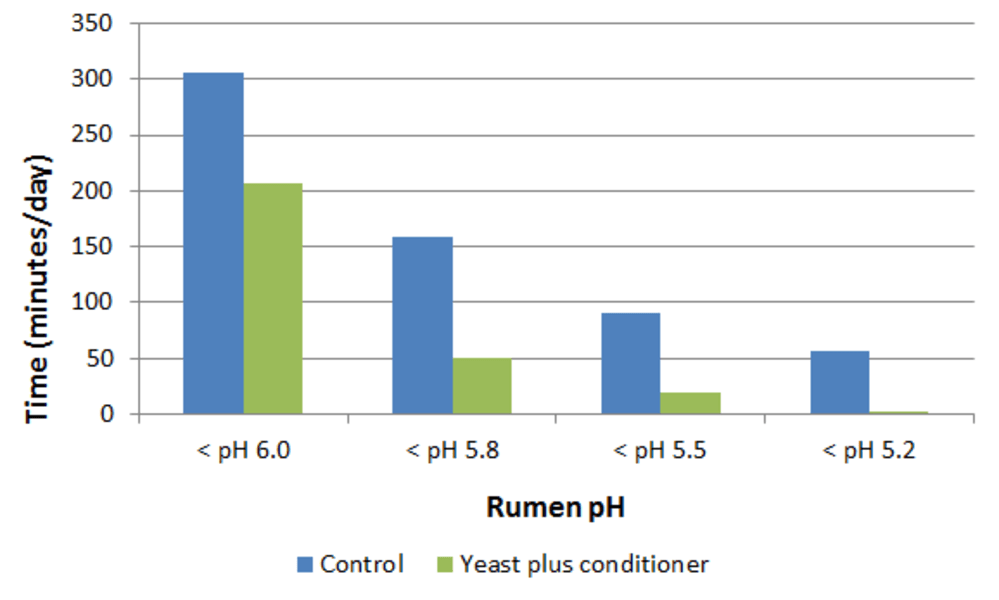Maximise butterfats this summer to give milk value and income a boost
Published Thursday, 11th April 2019Maintaining butterfat levels during the grazing season is one of the main challenges facing milk producers at this time of the year. It’s a particular issue for spring calving herds, where cows are also hitting peak yield and need to retain sufficient condition for good fertility.
“But even later lactation cows will typically produce milk with a lower butterfat content when grazing, despite yields naturally declining at a steady rate,” adds Dr Derek McIlmoyle, AB Vista’s EMEA Ruminant Technical Director.
“Although these cows aren’t facing the same energy demands as those in early lactation, yields are often still in excess of 15 litres/cow/day. Plus it’s an important time for replenishing body fat reserves prior to drying off.”
Balancing energy supply
Supplying the right amount and type of energy to the cow is therefore critical if butterfat production is to be supported without adversely affecting milk yields, body condition or fertility.
“Grazed grass can be low in fibre with high sugar and oil contents,” Dr McIlmoyle explains. “And for modern ryegrass swards this can persist right through until late summer, not just during spring when most expect it.
“Unless properly balanced in the rumen, the rapidly fermentable carbohydrates, together with the higher oil content, can have a negative impact on rumen function and fibre digestion, resulting in depressed butterfat production.”
Stabilising rumen pH
Achieving the correct energy release in the rumen is particularly important. This helps limit any rumen pH drop, and so promotes fibre digestion and the production of key milk fat key pre-cursors, such as the volatile fatty acid acetate.
“Aim to keep rumen pH as stable as possible, and to minimise the time spent below pH 5.8 when fibre digestion is compromised,” advises Dr McIlmoyle.
“Start by ensuring an adequate forage-to-concentrate ratio in the overall diet, and make sure any buffer feed contains sufficient long fibre to stimulate cudding – to release acid-neutralising saliva – and good rumen function.”
Hay or big bale silage are ideal, recommends Dr McIlmoyle, with chopped straw a good alternative if these are not available.
Correct concentrate choice
“In addition, make sure a good proportion of the energy supplied by concentrates comes from feeds containing digestible fibre. Dry feed options include sugar beet feed and soya hulls, along with many of the moist feeds, and this will help both maintain rumen pH and boost the supply of milk fat pre-cursors.
“If only feeding compound in the parlour, switch to a concentrate based on digestible fibre rather than starch, and feed ‘little and often’ to avoid overloading the rumen. And always make sure concentrates are high quality with good palatability to encourage full intake alongside grazed grass,” he adds.
Dr McIlmoyle also highlights the value of using a slow-release rumen conditioner like Acid Buf or a metabolically active yeast, such as Vistacell. Both act to reduce the rate and extent of any rumen pH drop, and so minimise the negative impact on rumen fermentation.
Increased butterfat production
In a recent trial, addition of a slow-release conditioner and an active live yeast to cows receiving a 65:35 forage-to-concentrate ratio diet increased both milk fat production (1649 g/cow/day vs. 1462 g/cow/day) and fat-corrected milk yield (38.9kg/cow/day vs. 37.1kg/cow/day). The result was due to a substantial reduction in the time the rumen spent at low pH (see Figure 1), which improved fibre fermentation and produced a significant rise in the acetate concentration in the rumen (63.1% vs. 61.9%).
Figure 1 – Effect on rumen pH (Source: Schothorst Feed Research, 2014)
“These results show how important it is to properly support rumen fermentation if butterfat production is to be maintained when grazing,” Dr McIlmoyle concludes.
“It doesn’t matter whether that’s achieved through changing the diet, adding a rumen conditioner or live yeast, or all three. The overall improvement in butterfat percentage, and subsequent milk value and profitability, can be substantial.”
Latest news
Stay ahead with the latest news, ideas and events.

Online Feed Fibre Calculator
Calculate the percentage of dietary fibre in your feed
Our calculator is designed for nutritionists and uses averages of global raw materials to calculate the dietary fibre content (plus other more in-depth fibre parameters) of finished animal feed. These parameters are available within AB Vista’s Dietary Fibre analysis service (part of our NIR service).
Sign up for AB Vista news
A regular summary of our key stories sent straight to your inbox.
SUBSCRIBE© AB Vista. All rights reserved 2025
Website T&Cs Privacy & Cookie Policy Terms & Conditions of Sale University IDC policy Speak Up Policy


























